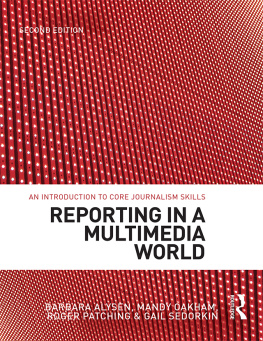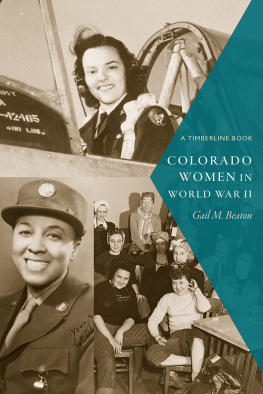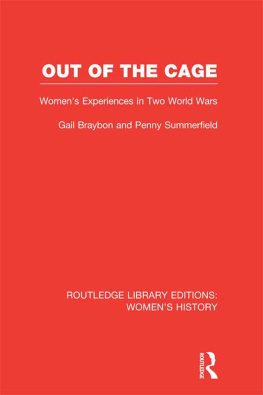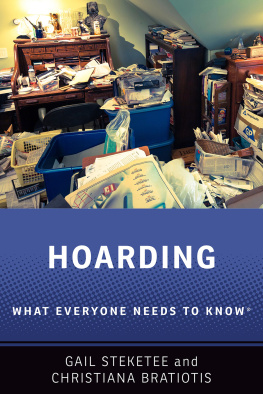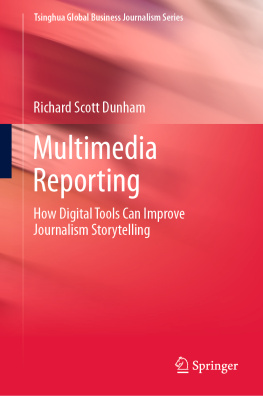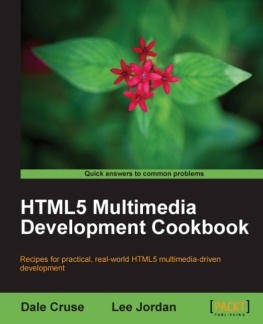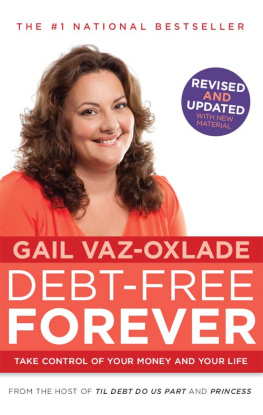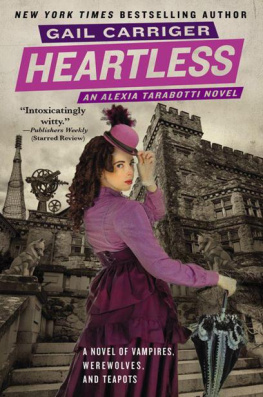REPORTING IN A MULTIMEDIA WORLD
2ND EDITION
Reporting in a Multimedia World
2nd Edition
Barbara Alysen, Mandy Oakham, Roger Patching & Gail Sedorkin
First published 2011 by Allen & Unwin
Published 2020 by Routledge
2 Park Square, Milton Park, Abingdon, Oxon OX14 4RN
605 Third Avenue, New York, NY 10017
Routledge is an imprint of the Taylor & Francis Group, an informa business
Copyright Barbara Alysen, Mandy Oakham, Roger Patching and Gail Sedorkin 2003, 2011
All rights reserved. No part of this book may be reprinted or reproduced or utilised in any form or by any electronic, mechanical, or other means, now known or hereafter invented, including photocopying and recording, or in any information storage or retrieval system, without permission in writing from the publishers.
Notice:
Product or corporate names may be trademarks or registered trademarks, and are used only for identification and explanation without intent to infringe.
Cataloguing-in-Publication details are available
from the National Library of Australia
www.trove.nla.gov.au
Internal design by Brittany Britten
Set in 11/15 pt Sabon by Midland Typesetters, Australia
ISBN-13: 9781742374338 (pbk)
This book has been written at a time of considerable upheaval in the Australian news media. New technologies are changing the way journalists work and the way audiences interact with the news and those who produce it. Changing audience tastes and new sources of news and comment have put pressure on the economies of the traditional media, which inevitably flows on to employment.
The future of journalism is widely debated and no longer assumed.
Even so, the profession continues to attract young people, many of whom will take a broad view of the types of media in which they hope to find work.
Despite the rapid changes taking place in the news media, there are some fundamentals that have remained relatively constant. Regardless of the format or field in which they hope to work, young aspiring journalists need an ability to find or generate stories. They need writing, interviewing and story construction skills and an understanding of the legal and ethical contexts that apply to their work. Today many also need to he able to take photographs as well as shoot and edit video. An ability to present to camera is increasingly important. They need to be able to use social media to find sources and stories and as a vehicle for their own work.
It is those fundamentals that are covered in this book.
We recognise that only a small proportion of today's journalism students will work in the metropolitan mass media. We have tried to give equal attention to the suburban and regional media and we have addressed niche media as well. There are some sections, such as the chapter on rounds reporting, where the focus is inevitably on mainstream papers. However, these sections can also be read as advice for covering any specialty area.
We know that most students taking courses in journalism hope to work in the media, so the final chapter covers workplace issues and strategies for launching a career in the news and information media.
We have written this book in a user-friendly style that we hope will appeal to students.
We know that the news media are changing rapidly so this book has a website to allow us to update material where necessary. It also links to our social media sites. The address for this website is .
A book like this would not have been possible without the assistance of a great many people. Some were interviewees, others provided general advice or feedback. In particular we are indebted to: Connie Agius, Ian Baker, Richard Baker, Lachlan Bence, Paul Bet hell, Jane Cafarella, Angela Carey, Andrea Carson, Peter Chapman, Rob Curtain, Suheil Damouny, Leah De Forest, Aleks Devic, Donna Edwards, John Ferguson, Brett Foley, Beth Harvey, Jess Hill, Sharon Hill, Martin Hirst, Stuart Howie, Patrick O'Donnell, Jeff McMullen, Julie Medew, Phoebe Montague ('Lady Melbourne'), Kate Nancarrow, Maria Nguyen, Jodie Munro O'Brien, Mary Papadakis, Mark Pearson, Ben Preiss, Hari Raj, Ian Richards, Jane Rocca, Lema Samandar, John Silvester, Cameron Stewart, Ingrid Svendsen, Mary-Anne Toy, Adam Turner, Chris Warren and Jana Wendt. Quote from column by Mark Day on p. 123 used with consent of the author. Quotes from feature articles by Cameron Stewart on pages 24,9-250 used with consent of the author. Photograph on p. 256 by Jodie Munro O'Brien of The Courier-Mailnewspaper used with permission. Photograph on p. 257 by Peter Ward, courtesy the Herald and Weekly Times Photographic Collection. All other photographs are the work of the authors.
Part 1
NEWSPEOPLE and INSTITUTIONS
How many jobs are there where you get to be the conscience of the community and actually hold politicians and other decision-makers accountable? It's a great privilege and I don't think a lot of people realise what a privilege it is really. You can actually influence things. That's the best part about being a journalist. You can make things happen. (Interview with Ingrid Svendsen, Walkley Award-winning former journalist)
In late 2007, Australia's largest selling broadsheet, The Sydney Morning Herald,splashed an unusual choice of images across the top of page 2: a picture of its new multimedia newsroom. Television news has long made a feature of showing its news-gathering operations. Pictures of camera crews regularly appear in stories, and shots of TV newsrooms are commonly used as the background for bulletins. The print media, on the other hand, traditionally have been less interested in showing readers their journalists' working environment. Or perhaps they had less to show. But the Herald's new digital newsroom was more than just a striking picture; it signalled a new approach to news production and editorial structure, one replicated across metropolitan and regional newsrooms. Where old-style newsrooms were marked by divisions, both in the physical space and in editorial decision-making, newsrooms were now increasingly organised according to a 'hub and spokes' concept that transformed their operations. Gone were the days when editorial executives sat behind glass windows and reporters were divided into sectional areas.

The newsroom at The Sydney Morning Heraldcombines masthead and digital, organised into a 'hub' and 'spokes'.
All of the key decision-makers in the newsroomincluding editors, news editors, chiefs of staff, tablet and online editors and section editors, as well as chief subswere now located in the general news area known as the 'hub'. Reporters and other editorial staff were then arranged around the hub, in 'spokes' radiating outwards. The result was constant communication between the news-gathering and the news-processing staff. Some newsrooms even developed software that allowed for each news product or contribution, be it a piece of written copy, video or audio, to be tracked as it made its way from source to hub and from hub to output. As the Heraldwrote: 'The key decision-makers for the newspaper and website are all within a few metres of each other' and can 'decide the best way to deliver the news to readers and viewers using video, slide shows, the website, print and mobile options' (Smith, 2007: 12). Within a couple of years, the integration of masthead and online staff had become even more significant.



